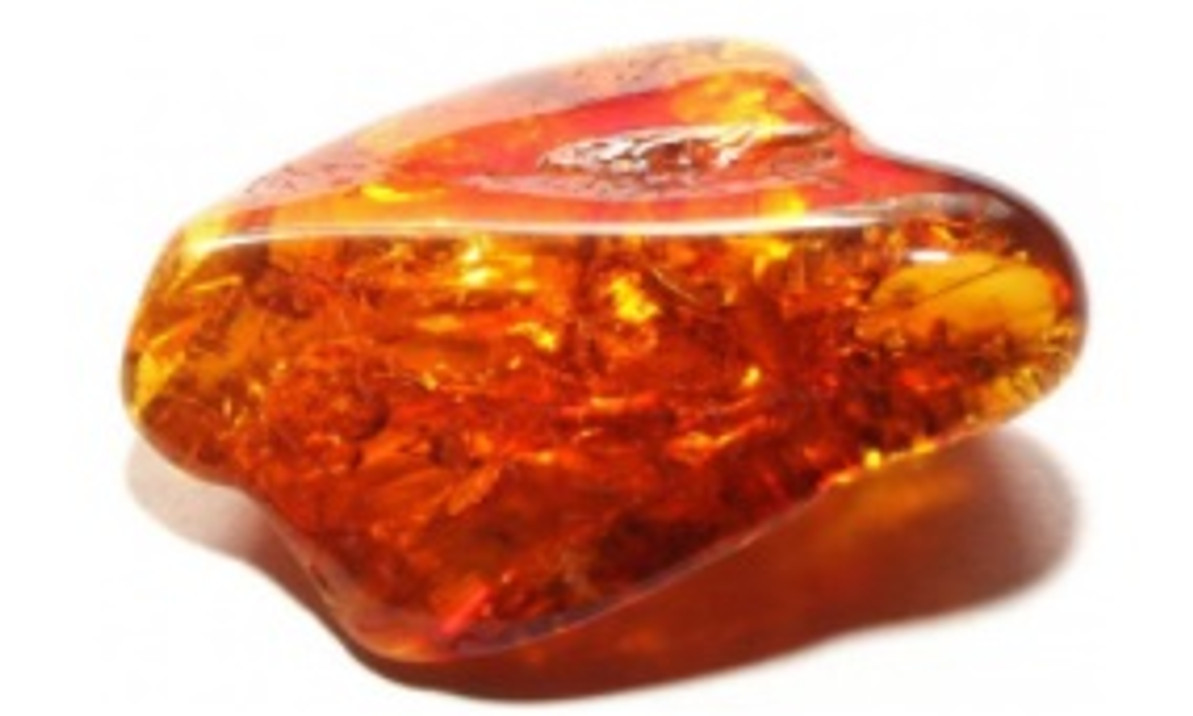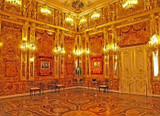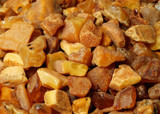Amber Colors and Shades.
Since Amber forms naturally in nature, it comes in various different forms and colors. Different factors such as exposure to lighting and tree origin can have an impact on the color of each amber piece. Amber color variety consists of 6-7 main colors. These include butterscotch, lemon, cognac, honey, green, cherry (black) and white. These mentioned colors are also being differentiated into up to 300 different shades. This high variety of colors and shades is one of the most fascinating aspects of this natural gemstone. So there is no single answer to the question what color Amber is.
Amber Colors.
Yellow - Orange (Honey). For most people who know little about Amber, yellow-orange color associates the most with this gemstone. This color Amber is also very common and it accounts for two thirds (~70%) of all pieces found. Amber comes in a lighter color (yellow) when there are tiny bubbles inside this resin. These bubbles are able to defract the light and as a result amber is formed in lighter shade. In cases when there are fewer of these bubbles, Amber comes in slightly darker shades that are similar to orange color. Yellow Amber color was highly valued throughout the years and people considered it as a stone of sun.
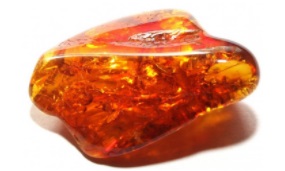
Brown (Cognac). This color of Amber is quite similar to yellow-orange; however it has slightly darker tone. Cognac color of Amber is commonly preferred by buyers, because it match well with silver and other jewelry materials. There are also a few different shades of this color distinguished - Light and Dark Cognac.
Green Amber. This particular color of Amber was formed when resin from the trees fell near different plants. Chlorophyll, which is a pigment found in plants, reacted with resin and this is how some Amber became green. Also some parts from the plants became trapped inside the resin, which influences the color as well. This particular color Amber can vary from light to dark green, but in most cases it is quite similar to olive oil. Throughout the years, Green Amber was associated with good luck and it was even believed that it can bring immortality.
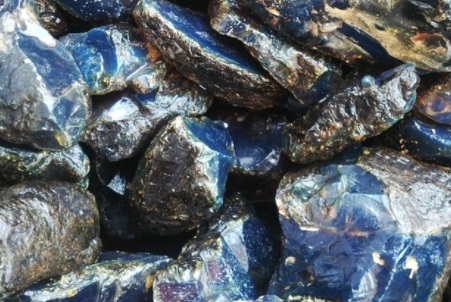
Blue (Dominican) Amber. This color of Amber is considered to be the rarest one. Normally Blue Amber tends to be very expensive and it is found in mines of Dominican Republic and in rare cases in Mexico. Due to its mining location it is quite commonly referred to as Dominican Blue Amber. However it is worthwhile to mention that this type of Amber is not blue in the sense that you might think. Inside of Blue Amber there are hydrocarbons that create blue glow once they are in sun's ultraviolet light. Other light sources that have UV component can provide this effect in Amber as well.
Red Amber. This color of Amber is quite commonly referred to as Cherry. It is one of the rarest colors of Amber and it accounts only for 0.5% of this gemstones resources. The shades of this color can vary from orange to even very dark red. In order for Amber to be formed in a red color, it needed to stay in the air for a long period of time. Circumstances like heat of the sun, forest fires and natural oxidation process resulted in some Amber obtaining particularly red color. In order to notice any changes in Amber color due to these natural processes a lot of time is needed. Usually it can take even up to 100 years to see any difference in color without using artificial heating. Due to its rarity and potential mystical powers red amber was highly valued in Japan. It was even featured in Shosoin treasures and it was referred to as Dragons blood.
Black Amber. About 15 percent of all Amber that is found today can be categorized as Black. One could argue that Black Amber doesn't even exist since in many cases the color is a result of additional components that are trapped inside. These components can be remains of trees that Amber was formed close to or other type of plant matter. There are even cases that these impurities take 85-90% of the whole Amber piece. In these circumstances it can be more difficult to prepare it for jewelry making since it can be less solid. One quite unique aspect of this Amber color is that it might show different color once it is held against the light. So instead of black, you might see red, brown or other colors. Throughout the years there have been different beliefs about Black Amber. It was thought that it can help to avoid attacks from enemies and protect the soul from evil spirits.

Butterscotch. This color of Amber can be dark yellow or even white (with various hues). It is very common for Butterscotch Amber to have natural embellishments and various patterns. During some times this color wasn't very common, which resulted in high price. Since only rich people were able to afford it, it was quite commonly referred to Butterscotch Amber as Royal. Nowadays larger quantities of this color of Amber are being found so the price is affordable for most buyers.
White Amber. White color of Amber is quite rare and highly valued by jewelry enthusiasts. It is not easy to find completely white color of this resin, because commonly there are various impurities visible. It is possible to find various patterns and other color inclusions. One quite unique aspect of White Amber is that it is slightly lighter than other colors. Due to this reason, this color of Amber can float even in fresh water. In ancient times it was even believed that particularly white Amber has healing properties. Due to this white Amber was one of the components for making medicine to treat hear conditions.
All colors of Amber contain the same amount of Succinic Accid. So the argument that some colors of Amber can provide more benefits over the others is simply not true. So if you are wondering what shade & color of Amber to choose, your choice should mostly rely on your color preferences.
Recent Posts
-
The Amber Room.
Creation of The Amber Room. The Amber Room can be considered as the most remarkable creation from …19th Jun 2018 -
Baltic Amber History and Myths.
AMBER HISTORY. Baltic Amber was used by humankind since the beginning of time (the end of Ice Age) …19th Jun 2018 -
Baltic Amber Benefits.
DOES AMBER HAVE HEALTH BENEFITS?Various health and healing properties were attributed to Baltic Ambe …22nd May 2018

